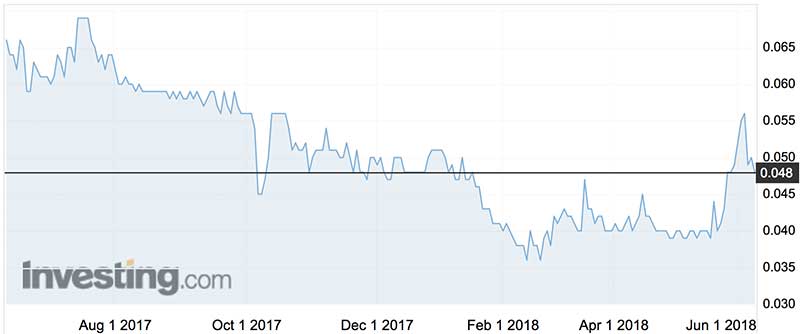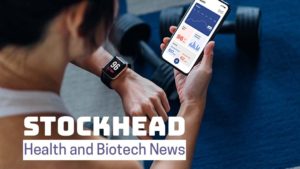Factor Therapeutics tests new weapon in battle of diseases

Pic: Luis Alvarez / DigitalVision via Getty Images
In the public Battle of the Diseases, venous leg ulcers (VLUs) are losing the PR war to breast cancer (Pink Ribbon Day), motor neurone disease (Ice Bucket Challenge) and even muscular dystrophy (National Superhero Week).
“Trying to heal wounds is not at all sexy,” says Dr Rosalind Wilson, chief of Factor Therapeutics (ASX:FTT).
“The level of public awareness of venous leg ulcers (VLUs) is a massive problem — they just don’t get talked about.”
Affecting up to 3 per cent of the populace, VLUs are caused by poor circulation due to blood clots, ageing, injury or obesity.
They are notoriously difficult to treat, with the wounds, on average, recurring four times.
The untrendy nature of the affliction is reflected in what Dr Wilson dubs a “stunning” lack of progress in wound care R&D in general.
The last time a key wound care technology was approved for diabetic leg ulcers was in 1997, when Seinfeld episodes (new ones, not repeats) ruled the airwaves.
“When I came into the wound-care field I was pretty stunned about how little research was being done in general,” Dr Wilson says.
She posits that one reason for this is that wound care products are usually regulated as devices, which requires a lower standard of proof than for a drug.
As a result, the wound care developers don’t make the extra R&D effort because they don’t have to.
No RDO for Factor
But we are seeing a lot of scaffolding these days — and we’re not talking about building sites. Rather the healing technologies to treat wounds and burns based on creating a structure on which cells can regrow.
(The clinicians don’t even require a CFMEU ticket, but we doubt whether they would work on their RDO, either)
Factor’s clinical work centres on phase II trialling of its scaffolding product for VLUs, dubbed VF001.
VF001 is not the first Virgin flight of the day but a liquid, topical treatment that contains two nature-based substances.

The first, a peptide called vitronectin creates a biological scaffold to which the skin cells attach.
The second is an insulin-like growth factor-1 (IGF-1) which orders the cells to go forth and multiply.
The unguent is applied weekly during standard dressing changes.
Tissue name change nothing to be sniffed at
Until May 2016 Factor Therapeutics was known as Tissue Therapies, but opted to rebrand after a corporate overhaul.
As part of the process, Factor dumped the Vitrogro name in favor of the more generic title.
The revamp was spearheaded by then executive director Dr Christian Behrenbruch, who reverted to non-executive director after overseeing the appointment of Dr Wilson in May last year.
Dr Wilson has held senior global roles at companies including Nucleusx (medical communications) and Roche; and more recently was the Australian Lung Foundation’s executive officer.
Tissue’s technology evolved from work at Queensland University of Technology’s Institute of Health and Biomedical Innovation.
About VF00102
Factor’s clinical work centres on its phase II VLU trial of VF001 that goes by the equally catchy name of VF00102.
The multi-site, 168-patient trial involves the subjects receiving a dose of the good stuff or a placebo over 12 weeks. They also receive the standard-of-care of moist dressings and compression bandages.
The primary endpoint is simple enough: reduce the size of the wound.
Other endpoints are the proportion of patients with full wound closure, time of wound closure and “improvements in pain and quality of life and safety.”
After long delays, in May Factor reported VF00102 had enrolled 70 per cent of its intended 168 patients, with the withdrawal rate lower than expected.
At Factor’s annual meeting last month, management presented preliminary results based on 91 patients that had completed treatment.
By the end, 53 per cent were fully healed, with 50 per cent healing by week four and 70 per cent healing by week 12.
This compared with the standard of care UK trial, called Venus 3. In this 49-patient effort, 41 per cent were fully healed, with 50 per cent healing at week 10 and 55 per cent healing at week 12.
Bear in mind that because the Factor trial is blinded, the rapidly healing patients could well be those taking the placebo.
Top-line results are due in October, with full results early in 2019.
Factor is carrying out early stage work for diabetic leg ulcers, ocular applications and harlequin ichthyosis (a severe genetic condition that causes infants’ skin to turn hard and thick).
In July, Factor plans to start a program for an ocular orphan indication known as persistent corneal epithelial defect (a hole on the surface of the eye).
If you don’t succeed the first time …
In its Tissue days, Factor failed to win European approval for a VLU device despite a positive 53-patient trial. In 2011, Tissue Therapies said it expected European approval that year along with the start of a US trial and first sales in 2012.
In 2013, the company said that despite assurances from its European Medicines Agency (EMA) responsible entity the British Standards Institute that Vitrogro was a device and the EMA took a further two years to decide that the IGF-1 in the potion’s mixture was actually a drug, requiring a new trial.
Chief executive officer Dr Steven Mercer took the fall.
While the previous trial results were promising, the small size of the patient base raised issues which the current larger trial should obviate.
“We should be in a position to return to CE Mark process fairly soon after the final readout,” Dr Wilson says.
“In parallel we will approach the US Food and Drug Administration for an end of phase II meeting.”
As the US process would involve a drug rather than device approval, a phase III trial would be required.
Dr Wilson says European approval could be possible within nine to 12 months, with a product on market by 2020.
Missed by that much …
Reflecting Factor’s US focus, the company this year has changed to a December 31 balance date. This meant shareholders were treated to two “annual” meetings, on November 16 last year and on May 24 this year.
At the most recent one, management narrowly avoided a first ‘strike’ against its remuneration report: a 23.8 percent protest vote compared with the threshold 25 per cent.
Dr Wilson attributes the near miss to institutions unhappy with the options-based incentive scheme for directors.
But none of the option tranches was granted below an 11c a share strike price so they’re nowhere near in-the-money.
“Some investors were clearly affected by the company’s inability to get over the line in Europe last time around,” she said. “But there is no other issue.”
Dr Boreham’s diagnosis:
Factor is in a similar genus to Polynovo (PNV, market cap $392 million), which has an approved scaffolding called Novosorb on the market.
Unlike Polynovo, which can use its CSIRO-originated product in a range of materials, Factor presents a binary outcome as a one-product company.
Factor’s mandatory risk statement — a.k.a. the cup of truth — states there’s no assurance a product will be “safe and efficacious” or able to be commercialised.
As the Bard said, it’s a case of VF001-2B, or VF001-NOT-2B.
At least Factor is reasonably well cashed-up, having last month raised $4.17 million in a non-renounceable rights issue at four cents apiece.
Three institutions (Allan Gray, Fidelity and Acorn Capital) are major shareholders. So, if Factor does need a wee top up, management knows who to turn to first.
This column first appeared in Biotech Daily
Disclosure: Dr Boreham is not a qualified medical practitioner and does not possess a doctorate of any sort. He awaits a National Canker Sore Week, no doubt in vain …
The content of this article was not selected, modified or otherwise controlled by Stockhead. Stockhead has not provided, endorsed or otherwise assumed responsibility for any financial product advice contained in this article.
UNLOCK INSIGHTS
Discover the untold stories of emerging ASX stocks.
Daily news and expert analysis, it's free to subscribe.
By proceeding, you confirm you understand that we handle personal information in accordance with our Privacy Policy.








